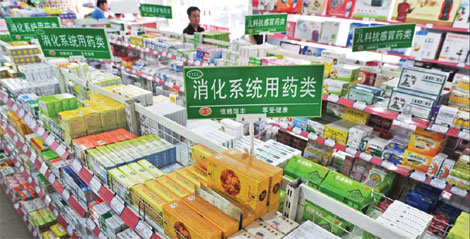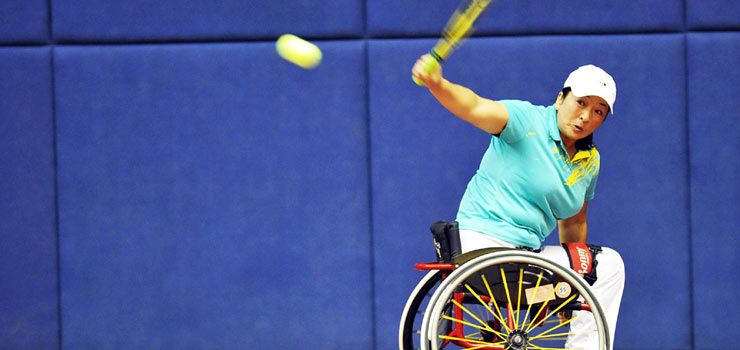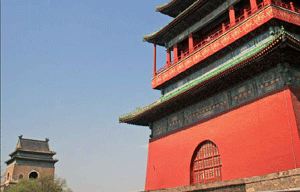Chinese pharmaceuticals testing the US drug market
Updated: 2011-10-28 09:26
By Zhao Yanrong (China Daily)
|
|||||||||
|
Chinese pharmaceutical companies are trying hard to get their products approved for overseas markets. [Provided to China Daily] |
After three hours of shopping on Fifth Avenue in New York City, Zhao Chao doesn't seem that interested in the luxury brands on display from around the world - he has only purchased a suitcase at the request of a colleague.
On his first trip to the United States, the president of Buchang Pharmaceuticals, one of the biggest Chinese medicine companies, prefers selling to buying.
"Nowadays, Chinese pharmaceutical companies are capable of expanding their market worldwide, and Chinese medicine is capable of entering major Western markets, such as the US," Zhao says. "It's just a matter of how."
Along with Zhao, about 30 businesspeople from the Chinese pharmaceutical industry, including CEOs of pharmaceutical companies, editors from industry magazines and directors from investment institutions, visited New York and Boston for six days at the end of last month.
"We are here to learn from the major international pharmaceutical entrepreneurs, and to also look for cooperation possibilities," he adds.
During their tight schedule of three and a half days in New York, the group visited Amgen Inc, a leading biotechnology company, and Pfizer Inc, the world's largest research-based pharmaceutical company. They also met with Ernst & Young LLC's pharmaceutical department as well as Warburg Pincus LLC, an investment company that targets medical markets.
"The major differences in the past two years is the huge investment flow into the pharmaceutical industry, which makes those companies confident in developing their own overseas market," says Tan Yong, vice-president and managing editor of Healthcare Executive, a leading pharmaceutical magazine from China that provides insider news on the industry.
According to the National Bureau of Statistics of China, fixed-asset investment in the pharmaceutical industry at the end of June was about 125.9 billion yuan ($19.7 billion), which is almost 38 percent more than the same period in 2010.
With China working to reform healthcare, more investments are expected in the second half of this year.
"The pharmaceutical industry has become a harbor for many investors in China due to its relatively stable market performance and the strong support from the Chinese government," Tan says.
More than 30 pharmaceutical companies listed on China's stock exchanges last year, while more than 500 organizations and institutions established teams and programs focusing on the pharmaceutical industry, Tan says.
According to a report by the Ministry of Commerce, the total sales of pharmaceuticals in China was 708.4 billion yuan in 2010, nearly 25 percent more than that of the previous year. Retail sales rose 20 percent in 2010 to 127.5 billion yuan compared with a year earlier.
Compared with China's growing market, its effort to expand overseas hasn't been as successful.
In 2008, China held a sizable share of the US' pharmaceutical imports, $1.5 billion of $80 billion, according to a report from Nixon Peabody LLP early last year.
In the first six months of this year, China exported $3.82 billion worth of drugs, an increase of 48.2 percent from the same period last year. The prices of Chinese drugs, however, have dropped dramatically, says the China Chamber of Commerce for Import & Export of Medicines & Health Products.
For instance, the export price of a drug used to treat cardiovascular disease dropped 96 percent last year. The increasing number of exports but the decreasing prices reduced the profit margin of Chinese pharmaceutical companies overseas.
"The major Chinese pharmaceutical firms' exports to the US and Europe are raw and unprocessed drug materials. If the companies want to take a bigger market share in the US, they should try to export their products as prescription drugs rather than materials," Tan adds.
That target has pushed many Chinese companies to do research in American laboratories.
"We are working very hard on our goal - the modernization of Chinese medicine and an international market," Zhao says.
Since March 2009, Buchang has worked with the Perelman School of Medicine at the University of Pennsylvania and the Weill Cornell Medical College in New York City to research a drug Buchang claims inhibits tumors.
"It is the first step to prove our drugs under the regulation system of the US Food and Drug Administration because we don't want to ship our products as nourishments or food to the US anymore," Zhao says.
Tan suggests that Chinese pharmaceutical companies should offer the US medicine that isn't currently on the market.
"The US has the largest market and a well-developed market. We have the opportunity to fill their market gap," Tan adds.
Zhao agrees. "Different from Western drugs, some kinds of our Chinese medicine don't have strong side effects, and we are trying hard to get American authorities' approval for them," he adds.
Buchang is currently conducting research on the effectiveness of a drug that treats cardiovascular disease in a group of 2,400 patients at Fuwai Hospital, a leading Chinese institution on cardiovascular disease prevention and treatment. The research is likely to be completed by the end of this year and the company expects to sell the product in the US.
With the reform of the American health system that began last year, Chinese companies are hoping their low-priced drugs that provide the same functions as Western medicine can win a portion of the market in the US. However, Dave DeMarco, northeast pharmaceutical leader of Ernst & Young, doesn't see it happening.
"Theoretically, all companies have the opportunity. But in order to participate in the reform, you should run the business here first," DeMarco says.
The industry insider suggests that Chinese companies might have better opportunities if they focus on health services rather than drugs.
He cited the partnership between Nuubo, a Spanish company that produces hardware, software and wireless systems with smart fabrics, and telecom giant Telefonica as an example. The two companies developed a shirt that has a device the size of credit card in it. It monitors a patient's heart rate, creating an electrocardiogram to transmit to a hospital or doctor using cell phone technology.












